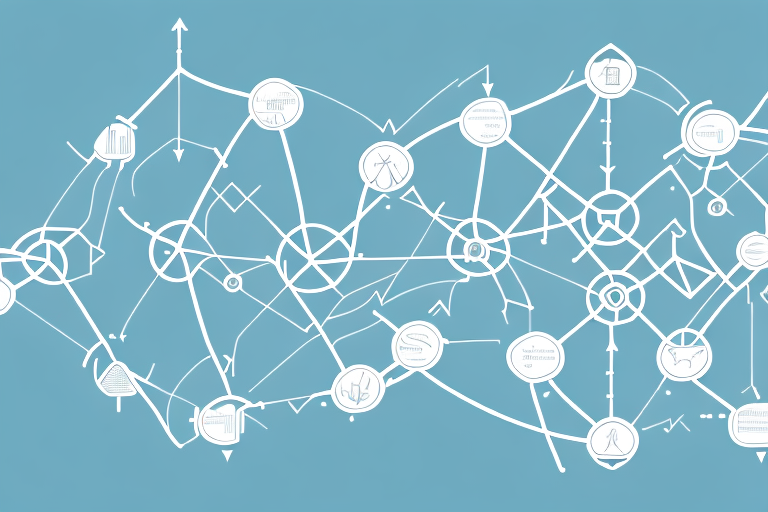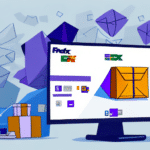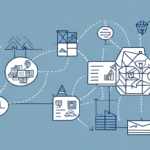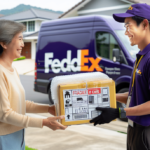E2 Import Entry Acceptance Advice for Supply Chain Professionals
As a supply chain professional, you understand the importance of timely and accurate import entry information. The E2 import entry process can be complex, and mistakes can result in delays and added costs. In this article, we provide you with comprehensive advice for successful E2 import entry acceptance, including tips for streamlining the process, compliance requirements, and the role of Customs and Border Protection (CBP).
Understanding the E2 Import Entry Process
The E2 import entry process involves submitting electronic information to the Automated Commercial Environment (ACE) system. This information includes details on the product being imported, the importer of record, the value of the goods, and the country of origin. The importer of record is responsible for submitting the entry, or they can hire a licensed customs broker to manage the submission.
Once the entry is submitted, CBP officers review it for accuracy before releasing the goods into the country. According to the CBP guidelines, it’s crucial to ensure all information is accurate and complete to avoid delays or penalties. Additionally, certain products may require extra documentation or permits related to health, safety, or environmental standards.
Working with experienced customs brokers or trade consultants is recommended to navigate the E2 import entry process and ensure compliance with all applicable regulations.
Importance of Accurate Import Entry Information
Accurate import entry information is critical for the successful clearance of goods through customs. Inaccurate or incomplete information can lead to the rejection of the entry and shipment delays. Ensuring all details are correct and up-to-date, including any changes to the product or shipment, is essential.
Accurate information helps avoid costly penalties and fines. CBP has the authority to impose significant penalties for violations of import regulations, including incorrect or incomplete information on import entries. These fines can negatively impact a company's financial health.
Moreover, accurate import entry information helps prevent shipment delays and disruptions. Incorrect or incomplete data may require CBP to conduct additional inspections or request more information, leading to increased costs and potential damage to a company's reputation. Providing precise and comprehensive import entry information ensures swift and efficient clearance of shipments.
- Prevents rejection of entries
- Avoids shipment delays
- Reduces the risk of penalties and fines
- Maintains company reputation
Common Mistakes in E2 Import Entry Submission
Several common mistakes in E2 import entry submissions can result in delays and added costs:
- Incorrect product classification
- Incorrect invoice value
- Incorrect country of origin
- Incomplete entry information
To avoid these errors, it is essential to thoroughly understand CBP regulations and guidelines and ensure that all submitted information is accurate and complete.
Another frequent mistake is failing to provide the required documentation, such as certificates of origin or bills of lading. Without these documents, entries may be rejected or delayed, leading to additional costs and potential loss of business.
Tips for Streamlining E2 Import Entry Acceptance
Streamlining the E2 import entry acceptance process can reduce the time and resources required for clearance. Here are some effective tips:
- Maintain Accurate Records: Keep up-to-date and precise records of all import transactions.
- Leverage Technology: Utilize automation tools to manage and submit entries efficiently.
- Hire Experienced Customs Brokers: Professional brokers can manage the submission process and ensure compliance.
- Ensure Complete Documentation: Submit all required documents promptly and accurately.
By being proactive and organized in submitting all necessary documentation, you can facilitate a smoother and more efficient clearance process.
Compliance Requirements for E2 Import Entry
CBP sets forth several compliance requirements for E2 import entries, including:
- Providing accurate information on the product, importer of record, and country of origin
- Complying with all applicable regulations and guidelines
- Submitting supporting documentation as required
Compliance requirements may vary depending on the type of product being imported. For example, certain products may require additional permits or certifications before they can be imported into the United States. Importers are responsible for ensuring that all necessary requirements are met before submitting an E2 import entry to avoid penalties and legal consequences.
The Role of Customs and Border Protection in E2 Import Entry
CBP plays a vital role in the E2 import entry process by reviewing each entry for accuracy and compliance before releasing goods into the country. CBP officers ensure that all regulations and guidelines are followed and may request additional information or documentation if necessary.
Beyond entry reviews, CBP enforces trade laws and regulations, including preventing the importation of counterfeit goods and enforcing trade agreements and tariffs. CBP officers are trained to identify potential risks and threats to national security, collaborating with other government agencies to maintain the country's safety.
CBP also offers resources and support to importers, such as training and education on import regulations and procedures. Programs like the Customs-Trade Partnership Against Terrorism (C-TPAT) provide benefits to importers who meet specific security requirements. Utilizing these resources can lead to a smoother and more efficient import process.
Best Practices for Successful E2 Import Entry
Implementing best practices can ensure the successful acceptance of E2 import entries:
- Maintain Accurate Records: Keep detailed and up-to-date records of all import activities.
- Use Technology: Automate parts of the process to increase efficiency.
- Hire Experienced Customs Brokers: Professionals can manage the process and ensure compliance.
- Work Closely with CBP: Ensure ongoing compliance by maintaining open communication with CBP.
- Properly Classify Goods: Determine the correct Harmonized Tariff Schedule (HTS) code for your products to accurately calculate duties and comply with regulations.
Proper classification of goods is crucial as it affects the amount of duty paid and applicable regulations. Collaborating with knowledgeable customs brokers or trade consultants can help ensure correct classification and take advantage of available duty savings programs.
Navigating E2 Import Entry Regulations and Guidelines
Navigating the complex regulations and guidelines set by CBP for E2 import entry requires a thorough understanding of the requirements. Seeking assistance from an experienced customs broker can be beneficial. Staying updated on regulatory changes is also essential for successful clearance.
Understanding the impact of tariffs and trade agreements is another critical aspect. Familiarity with current trade agreements and tariffs helps importers make informed decisions and avoid unexpected costs. Staying informed about any changes to these agreements can significantly influence the import process.
Benefits of Using an Experienced Customs Broker for E2 Imports
Utilizing an experienced customs broker offers numerous benefits:
- Regulatory Expertise: Brokers have a deep understanding of CBP regulations and guidelines.
- Streamlined Processes: Brokers can efficiently manage the submission and compliance processes.
- Enhanced Compliance: Ensures all entries meet CBP requirements, reducing the risk of penalties.
- Error Resolution: Brokers can address and rectify any errors or rejections in entries quickly.
- Cost Savings: Proper classification and duty savings programs can reduce import costs.
By leveraging the expertise of a customs broker, companies can save time and money while minimizing the risk of costly mistakes or delays in the import process.
How to Address Errors and Rejections in E2 Import Entries
If an E2 import entry is rejected by CBP, it is crucial to address the errors or issues promptly to avoid further delays and additional costs. Steps to rectify rejections include:
- Providing any additional information or documentation requested by CBP.
- Re-submitting the entry with corrected information.
- Engaging an experienced customs broker to manage the correction process.
Some rejections may stem from issues with the product itself, such as non-compliance with safety or labeling regulations. In such cases, collaborating with the supplier to resolve the issues and ensure future shipments comply with all requirements is essential.
Proactive measures to prevent errors and rejections can save time and resources, and help maintain a positive relationship with CBP and other regulatory bodies.
Enhancing Supply Chain Efficiency with Effective E2 Import Entry Management
Effective management of the E2 import entry process can significantly enhance supply chain efficiency by reducing delays and additional costs. Key strategies include:
- Maintaining Accurate Records: Ensures all import activities are well-documented and compliant.
- Using Technology: Streamlines data submission and monitoring processes.
- Compliance Adherence: Ensures all regulatory requirements are consistently met.
- Partnering with Experts: Engaging experienced customs brokers for expert management.
By implementing these strategies, companies can optimize their import processes, leading to a more efficient and cost-effective supply chain.
Conclusion
Successfully navigating the E2 import entry process can be challenging, but with the right knowledge and guidance, it can be streamlined to enhance supply chain efficiency. By following the tips and best practices outlined in this article and collaborating closely with CBP and an experienced customs broker, you can ensure the timely and successful clearance of your goods.
For more insights and detailed guidance on import processes, visit our [ShipScience blog](https://www.shipscience.com/blog).




















